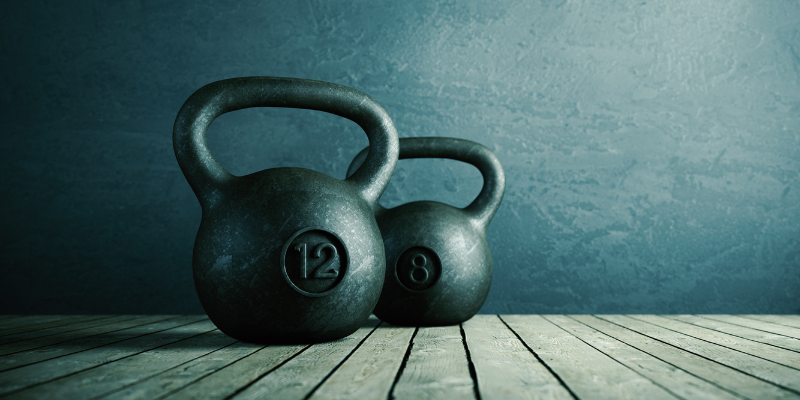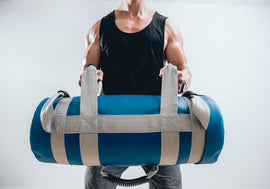Kettlebell weight training is an effective and intense full-body workout that uses weight to build strength and muscle. It is easy to learn and can be used for both beginners and advanced athletes. The combination of cardiovascular, strength, flexibility, and balance training all in one piece of equipment is often difficult to replicate with other pieces of gym equipment. It is a great way to gain strength, increase metabolism, and improve balance and coordination. It is also efficient, as you can do a full-body workout in just a few minutes.
Kettlebells are an incredibly versatile and effective tool but, with all the available weights, sizes, and shapes, it can be difficult to pick the right one.
Here we help you choose the right weight for your kettlebell, proper exercises with different types of kettlebell weights and some factors to consider in choosing the right weight on a kettlebell.
Choosing the Right Weight for a Kettlebell

Choosing the right weight is essential for a successful and safe workout. The weight you choose should be based on your body type, fitness level, and goals. Different weight ranges are recommended for different body weights.
For a person who weighs up to 110lbs, the recommended weight range is between 6-12 lbs for strength and power exercises, and 4-8 lbs for endurance and high-rep exercises.
If your body weight weighs up to 140lbs, then the recommended weight range for a kettlebell is 15 lbs to 35lbs for advanced exercises.
For those who weigh more than 175lbs, the recommended weight range is 35-55lbs.
It is important to start with a lighter weight and slowly increase the weight as you get used to the movements.
Types of Exercises with Different Kettlebells Weights
Kettlebell exercises can be adapted to any fitness level and weight. For lighter weight kettlebells, exercises such as swings, goblet squats, and russian twists are ideal. Swings should be done with a hip thrust, focusing on engaging your glutes and hamstrings. Goblet squats can be done with a wider stance and more upright torso to keep the weight closer to your body. Russian twists are an effective core exercise that will help you build stability and strength.
For heavier weights, exercises like snatches, turkish getups, and cleans should be done. Snatches involve lifting the weight from the ground to an overhead position in one fluid motion. Turkish getups involve alternating between standing and lying down, lifting the weight from the ground off to the side. Cleans involve lifting the weight from the ground and bringing it up to shoulder level.
These exercises should be done with proper form, and a spotter may be needed for heavier weights. Safety is key - if any exercise causes pain, stop immediately and consult a doctor or physical therapist.
Factors to Consider in Choosing the Right Weight on a Kettlebell

Strength and Endurance
The weight of a kettlebell should be determined by both your strength and endurance goals. If you’re looking to build strength and size, a heavier kettlebell is likely the best option for you. The heavier weight will help you to overload your muscles and build strength and muscle mass. If your goal is to develop muscular endurance, then a lighter kettlebell is the better choice. It will still provide an effective workout but won’t be as taxing on your muscles and joints.
Mobility
Kettlebells are incredibly useful for mobility training. When selecting a weight, consider the mobility exercises you’re looking to do. If you’re doing exercises that require a lot of range of motion, like the snatch, then you’ll want to use a lighter weight. Alternatively, for more static exercises, like the kettlebell swing, you can use a heavier weight.
Weight Increments
Before choosing a kettlebell, it’s important to consider the increments that your gym or store offers. When you start training with kettlebells your strength will increase, so we recommend having a kettlebell that come in increments of weight so you can improve your training.
Comfort
The last factor to consider is how comfortable you are using the kettlebell. You want to make sure that you’re able to comfortably lift and maintain the weight of the kettlebell. Kettlebells come in a variety of shapes, sizes, weights, and styles, and each has its own benefits and drawbacks. The comfort of a kettlebell is determined by the type of handle, the grip size, and the weight of the kettlebell.



